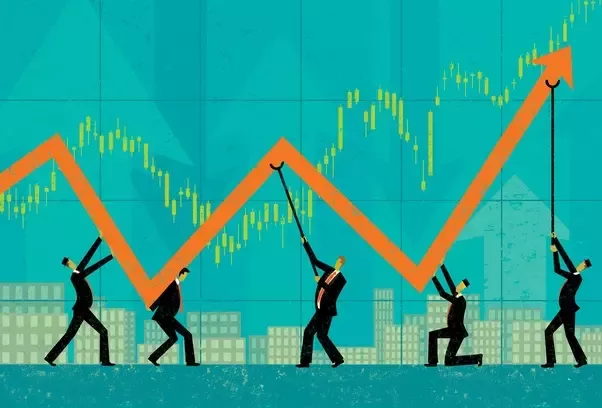Impact of Volatile Food Prices on Inflation and Economic Growth
February’s Consumer Price Index (CPI) Data
- Headline CPI remains steady at 5.09%, but food prices
- Consumer Food Price Index shows a notable increase to 66%, highlighting food inflation.
Concerns Over Vegetable Prices
- Vegetable prices, particularly potatoes, onions, and tomatoes, witness significant
- Potato prices shift from deflation to 12.4% inflation, onions surge by 22.1%, and tomatoes reach a six- month high of 42%
Supply Side Measures’ Impact
- Government’s measures, like the ban on onion exports, fail to curb rising
- Agriculture Ministry’s estimates suggest a decrease in onion and potato production, adding to inflationary
Challenges Ahead
- Water storage levels across reservoirs are below average, indicating potential challenges for summer-sown crops, particularly in the southern
- RBIDeputy Governor warns that high food inflation is hindering private consumption, essential
for economic
Policy Implications
- Policymakers face the challenge of curbing inflation to ensure inclusive and sustained economic
- The looming elections add urgency to addressing food inflation concerns to prevent social
Understanding Inflation Definition of Inflation
- Inflation refers to the sustained increase in the general price level of goods and services in an economy over a period of
- It is typically measured using indices such as the Consumer Price Index (CPI) or the Wholesale Price Index (WPI).
Causes of Inflation Demand-Pull Inflation:
Occurs when aggregate demand exceeds aggregate supply, leading to increased demand for goods and
services, thereby driving prices up.
Cost-Push Inflation:
Arises when the cost of production increases, such as due to higher wages or input costs, leading producers to pass on the higher costs to consumers.
Built-In Inflation:
Results from expectations of future inflation, leading workers to demand higher wages and businesses to increase prices to maintain profit margins.
Types of Inflation
Moderate Inflation:
Refers to a steady and manageable increase in prices, typically targeted by central banks to support economic growth.
Hyperinflation:
Characterized by extremely rapid and out-of-control price increases, often leading to the
breakdown of the monetary system and severe economic disruptions.
Stagflation:
Occurs when high inflation coincides with stagnant economic growth and high unemployment rates, posing significant challenges for policymakers.
Effects of Inflation
- Redistribution of Income: Inflation can lead to a redistribution of income and wealth, benefiting debtors at the expense of
- Uncertainty: High and unpredictable inflation can create uncertainty in the economy, affecting investment decisions and economic
- Fixed-Income Groups: Fixed-income groups, such as pensioners and savers, may experience a decline in real purchasing power as the value of money
- InternationalCompetitiveness: Persistent inflation can erode a country’s international competitiveness as domestic prices rise relative to those of trading
Measures to Control Inflation Monetary Policy:
Central banks use tools such as interest rate adjustments, open market operations, and reserve requirements to influence the money supply and control inflation.
Fiscal Policy:
Governments can use taxation and public spending policies to manage aggregate demand and control inflationary pressures.
Supply-Side Policies:
Measures aimed at increasing the efficiency and productivity of the economy, such as investment in infrastructure and education, can help alleviate supply constraints and reduce inflationary pressures.
Inflation Targeting
- Many central banks adopt inflation targeting as a monetary policy framework, setting explicit targets for inflation and adjusting policy instruments to achieve them.
- The Reserve Bank of India (RBI) also follows a flexible inflation targeting framework,aiming to maintain consumer price inflation within a target range while supporting economic
Global Perspectives
- Inflation trends and policies in major economies, such as the United States, European Union, and China, can have significant implications for the global economy and financial
- Understanding global inflation dynamics and policy responses is essential for assessing India’s position in the international economic
Celebrating 75 Years of Diplomatic Relations:
- Patrick’s Day 2024 marks 75 years of diplomatic relations between Ireland and India.
- The article highlights the historical partnership between Ireland and India during their struggles for
- It emphasizes the growth of trade, education, and people-to people connections between the two countries over the years.
Stand on Conflicts:
- Ireland expresses concerns about ongoing conflicts worldwide, including Russia’s actions in Ukraine and Hamas’s attacks on
- Ireland supports Ukraine’s path to European Union membership and calls for accountability in conflicts
- It advocates for upholding international humanitarian law and providing assistance to civilians affected by conflicts
A Young Talent Pool:
- The article emphasizes the importance of young people in addressing global challenges, such as climate change and human rights.
- Ireland highlights its economic strength and attractive environment for investment, trade, and study, particularly for young entrepreneurs and students.
- It reflects on Ireland’s domestic and international challenges and its commitment to progress, peace, and equality.
The Indian Link:
- Ireland values the contribution of Indian students and residents to its society, particularly in sectors like IT and healthcare.
- The article underscores the strong bilateral relationship between Ireland and India, rooted in historical partnerships and shared values.
- It emphasizes the importance of supporting and building enduring partnerships between nations.
Conclusion:
St. Patrick’s Day 2024 serves as a reminder of the deepening ties between Ireland and India and the importance of collaboration in addressing global challenges.

